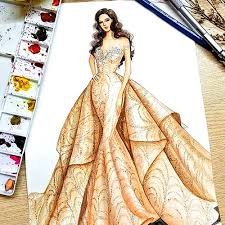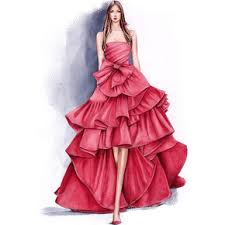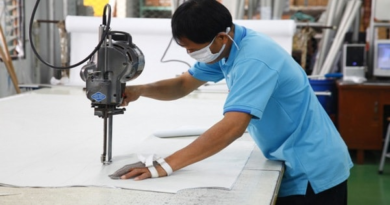What is Textile Science in Fashion Designing? Can Fashion Designer Work in Textile Industry?
Textile Science:
Textile science is a field of study that focuses on the science of textile materials, their properties, production, and application in various fields such as fashion, apparel, and home textiles. It is a multidisciplinary subject that combines the knowledge of chemistry, physics, and engineering to understand the behavior and performance of textile materials.
In the context of fashion designing, textile science plays a crucial role as it provides designers with a deeper understanding of the characteristics of different types of fabrics and how they can be used in creating fashionable clothing and accessories. Designers need to know the properties of different fabrics such as durability, comfort, texture, and color fastness, to create designs that are both aesthetically pleasing and functional.
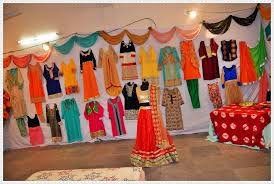
One of the primary concerns in textile science is the study of fibers, which are the basic building blocks of all textile materials. Fibers can be classified as natural, synthetic, or man-made, and each type has its unique properties that determine its suitability for different applications. Natural fibers such as cotton, wool, and silk are derived from plants or animals and have desirable properties such as breathability, softness, and moisture-wicking capabilities. Synthetic fibers, on the other hand, are made from chemicals and have properties such as durability, elasticity, and wrinkle resistance.
Another area of focus in textile science is fabric construction, which refers to the way fibers are woven, knitted, or bonded together to form a fabric. The type of construction used can affect the fabric’s texture, weight, and drape, which in turn, affect the design and functionality of the finished product. Designers need to understand the different types of fabric constructions and how they can be used to create various designs.
Textile science also includes the study of dyeing and finishing techniques, which are used to add color, texture, and other desired properties to fabrics. Dyeing involves the application of color to fabrics using various methods such as immersion, printing, or painting. Finishing, on the other hand, involves the application of different treatments such as sizing, softening, or waterproofing to enhance the fabric’s performance and appearance.

In fashion designing, textile science is an essential tool for creating designs that are both functional and fashionable. Designers need to have a thorough understanding of the properties of different fabrics and how they can be used to create garments that are comfortable, durable, and visually appealing. They also need to understand the different techniques used in dyeing and finishing fabrics, so they can create designs that are unique and have a distinct look and feel.
To sum up, textile science is an important field of study in fashion designing that provides designers with the knowledge and skills they need to create fashionable and functional clothing and accessories. By understanding the properties of different fibers, fabric constructions, and dyeing and finishing techniques, designers can create designs that are not only aesthetically pleasing but also durable and comfortable for the wearer.
Can Fashion Designer Work in Textile Industry?
Yes, fashion designers can work in the textile industry. In fact, fashion designing and textile industry are interrelated fields that often work hand in hand. Textile industry involves the production of various textile materials including fibers, fabrics, and other materials used in the manufacturing of apparel and fashion accessories. Fashion designing, on the other hand, involves the creation of designs for clothing, shoes, bags, and other accessories using these textile materials.
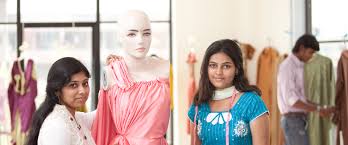
There are many roles that fashion designers can play in the textile industry. Some of these roles include:
- Textile Designer: Textile designers create patterns and designs for fabrics used in the production of apparel, home textiles, and accessories. They work with a range of materials such as cotton, silk, wool, and synthetic fibers to create unique patterns and designs that can be used in various applications. Textile designers use different techniques such as weaving, printing, and embroidery to create their designs.
- Product Developer: Fashion designers can also work as product developers in the textile industry. Product developers work closely with textile designers and other professionals in the industry to create new textile products that meet the needs of consumers. They are involved in the entire product development process, from ideation to production.
- Quality Control Specialist: Fashion designers can also work as quality control specialists in the textile industry. Quality control specialists are responsible for ensuring that textile products meet the required quality standards. They inspect textiles at different stages of production to identify defects and ensure that products are produced according to the required specifications.
- Material Sourcing Specialist: Material sourcing specialists are responsible for sourcing and acquiring textile materials used in the production of apparel and fashion accessories. They work closely with textile manufacturers and suppliers to ensure that they acquire high-quality materials at competitive prices.
- Fabric R&D Specialist: Fabric research and development (R&D) specialists are responsible for conducting research to develop new and innovative fabrics. They work with textile manufacturers and designers to create new fabrics that meet the needs of consumers and the fashion industry.
- Fashion Buyer: Fashion buyers are responsible for selecting and purchasing textile products for retail stores. They work closely with fashion designers and textile manufacturers to identify new and innovative products that meet the needs of consumers.
- Textile Marketing Specialist: Textile marketing specialists are responsible for promoting and marketing textile products to consumers. They work closely with fashion designers and textile manufacturers to develop marketing strategies that promote their products and increase sales.
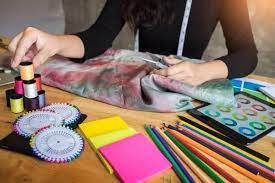
In summary, fashion designers can work in various roles in the textile industry. The industry offers many opportunities for designers to use their skills and creativity in creating new and innovative textile products that meet the needs of consumers. By working in the textile industry, designers can gain valuable experience and develop their skills, which can help them to advance their careers and achieve their professional goals.

